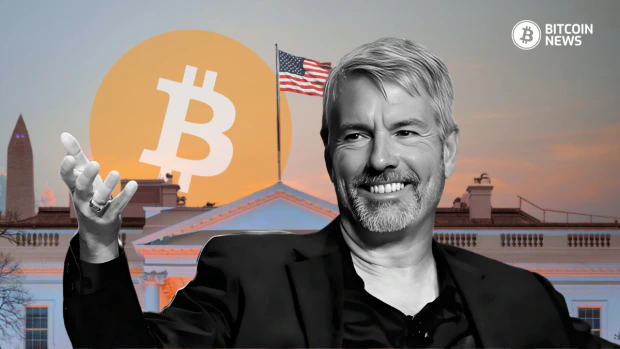Michael Saylor has laid out a big plan to transform the US digital asset landscape.
In his “Digital Assets Framework” document, Saylor outlines a vision to utilize bitcoin and other digital assets in the US economy, strengthen the US dollar and unlock trillions of dollars of growth.
At the heart of Saylor’s plan is a “strategic bitcoin reserve” for the US Treasury. By holding bitcoin as a national asset, Saylor thinks the US could create $16 trillion to $81 trillion of wealth, and pay off the $36 trillion national debt.
President-elect Donald Trump has expressed interest in this idea and said he will keep the 198,000 bitcoin the government already has. Saylor wrote:
“A strategic digital asset policy can strengthen the US dollar, neutralize the national debt, and position America as the global leader in the 21st-century digital economy.”
Saylor’s framework proposes a taxonomy to categorize digital assets into different buckets. These are:
- Digital Commodities: Decentralized assets not tied to an issuer, like bitcoin.
- Digital Securities: Tokenized equity or debt.
- Digital Currencies: Stablecoins pegged to fiat.
- Digital Tokens: Fungible tokens within an ecosystem.
- NFTs: Unique digital representations of assets like art or intellectual property.
- Digital ABTs: Tokens tied to physical commodities like gold or oil.
By categorizing these, Saylor wants to bring clarity to regulators and market participants.
A key part of Saylor’s proposal is a detailed framework for the rights and responsibilities of issuers, exchanges and asset owners.
According to Saylor, issuers must be transparent and ethical, exchanges must protect client assets and fair trading, and owners must manage their assets in accordance with local laws.
“No one has the right to lie, cheat, or steal,” Saylor says. “All participants are civilly and criminally responsible for their actions.”
This framework will build trust in the digital asset market and reduce risk for participants.
To encourage innovation, Michael Saylor wants to reduce the cost and time to issue digital assets. He suggests compliance costs should not be more than 1% of assets under management and annual maintenance costs should be below 0.1%.
This could bring the cost of creating a digital token from tens of millions of dollars to tens of thousands, and the time from years to days. Saylor says this could open up capital markets to small businesses, artists and mid-sized companies.
Saylor wants to see stablecoins grow from $25 billion to $10 trillion. He believes this will help the dollar maintain its global reserve currency status and create huge demand for US Treasuries.
Beyond Bitcoin, Saylor’s plan is to support the entire digital asset market. He thinks the global digital capital market will grow from $2 trillion to $280 trillion and US investors will get a big piece of that pie.
He also sees the US leading a “Capital Markets Renaissance” and unlocking trillions of dollars in value, empowering millions of businesses and democratizing investment opportunities.
Saylor’s plan fits with President-elect Trump’s plans to support Bitcoin and digital assets.
Trump’s administration is looking to create a bitcoin reserve, like the US Strategic Petroleum Reserve, and hiring pro-Bitcoin experts like former SEC Commissioner Paul Atkins.
Related: Could Trump Become a Bitcoin Maximalist?
The proposal states:
“By establishing a clear taxonomy, a legitimate rights-based framework, and practical compliance obligations, the United States can lead the global digital economy.”
Saylor is putting his money where his mouth is, with his company, MicroStrategy, becoming the largest corporate holder of bitcoin. His firm now holds over $42 billion worth of bitcoin.
The company’s bitcoin strategy has grown its market cap and got it listed on the Nasdaq 100 alongside Tesla and Amazon.
Saylor’s plan is the roadmap for the US to tap the power of digital assets. By leading the digital economy, Saylor thinks the US will secure its financial future, strengthen its currency and unleash innovation like never before.










